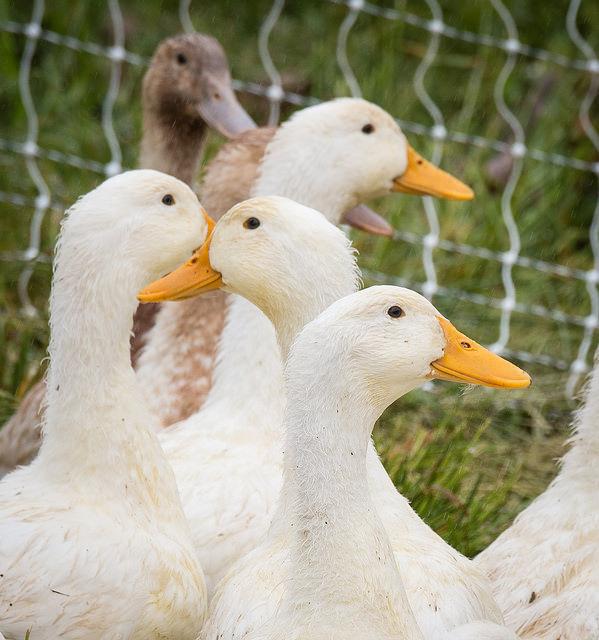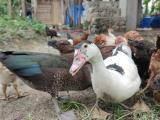A low-pathogenic H5 avian influenza outbreak struck a duck farm in southern Ontario, Canadian officials announced yesterday, as new details emerged about the highly pathogenic H5N1 strain plaguing flocks in West Africa over the past 2 years.
After a several-year hiatus, the H5N1 virus reemerged in West Africa in 2014, but according to the new study, recent outbreaks have been fueled by a different H5N1 clade. The continent's fresh round of outbreaks has led to the deaths of about 1.6 million birds.
Further tests under way in Ontario
The Canadian Food Inspection Agency (CFIA) said yesterday that the farm is near St. Catharines, Ontario, and that further tests are under way to determine the virus subtype and strain, with results expected within days.
Authorities put the farm under quarantine to curb the spread of the virus and will determine a surveillance zone and movement restrictions. Once the birds are culled, the CFIA said it will oversee cleaning and disinfection of the barns and other equipment and materials at the farm.
Canada's last low-pathogenic avian flu detection appears to be the H5N2 strain in a hunter-shot wild duck near Abbotsford, British Columbia, in November 2015. In April 2015, highly pathogenic H5N2 struck two farms in southern Ontario, one housing turkeys and the other broiler chickens.
Distinct H5N1 genetic groups in Africa
An analysis of 43 genomes from H5N1 isolates collected from poultry and wild birds in five African countries in 2015 revealed two genetic groups within the 2.3.2.1c clade, along with mutations that could allow them to more easily infect mammals. Italian scientists and their African collaborators reported their findings yesterday in Emerging Infectious Diseases.
The team looked at H5N1 viruses collected from African nations from January through October 2015, confirming findings in five countries: Nigeria, Burkina Faso, Niger, Ghana, and Cote d'Ivoire. Since then, Cameroon has also reported H5N1 outbreaks in poultry. Complete sequences were obtained from 39 viruses, with partial sequences from 4.
Analysis revealed the 2.3.2.1c clade, closely related to H5N1 viruses that circulated in Europe and Egypt in 2014. Phylogenetic testing revealed two distinct clusters in Cote d'Ivoire and Niger, which researchers said suggests at least two distinct introductions into West Africa.
Also, the West African H5N1 viruses were highly similar to one isolated from a Canadian resident who got sick after a trip to China. The team said the viruses have mutations associated with enhanced binding to respiratory tract cells and increased virulence in mammals.
Given the devastating impact of H5N1 outbreaks on Africa's economies, it's vital for regional and national groups to work together to describe and track the evolution of the virus in the recent round of virus spread, the group concluded.
Novel H2N8 detected in China
In other research developments, Chinese investigators detailed a novel H2N8 virus isolated from a domestic duck in Zhejiang province in 2013. They reported their findings Jun 5 in Virus Genes.
The reassortant from multiple subtypes from aquatic birds and poultry in eastern Asia turned up during surveillance of live-poultry markets.
Tests with the novel H2N8 in mice showed low pathogenicity, but it replicated in their lungs without prior adaptation, according to the researchers, who said the findings show the importance of market duck surveillance for assessing possible threats to poultry and humans.
See also:
Jul 7 CFIA statement
CFIA 2015 Ontario avian flu investigation page
Jul 7 Emerg Infect Dis report
Jul 5 Virus Genes abstract






















